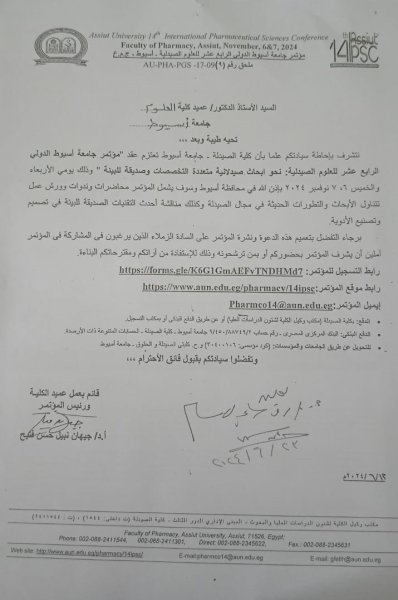

Do you have any questions? (088) 2345643 - 2412000 sci_dean@aun.edu.eg
The Egyptian cotton leafworm Spodoptera littoralis (Boisduval) (Lepidoptera: Noctuidae) is a pervasive agricultural polyphagous insect pest. Because of the negative side-effects of conventional pesticides used in agricultural fields, safer alternatives for insect pest management are required. We evaluated here susceptibility, biological features, and nutritional indices of S. littoralis after treatment of 4th- instar larvae with the neonicotinoid imidacloprid and the spinosyn spinosad separately or in combination. Larvae were fed for three successive days on treated leaves of castor-bean Ricinus communis using leaf-dip technique (treatment period). In addition, in case of nutritional indices study, treated leaves were replaced by fresh untreated leaves for two successive days (recovery period). Spinosad was more toxic than imidacloprid, and their combination revealed additive effects based on the co-toxicity factor. Individual and combined treatments significantly decreased pupation rate,
adult emergence rate, pupal weight, number of eggs laid per female, egg-hatch, and female longevity, compared to those of controls. Pupal and adult malformations were recorded. During the treatment period, nutritional indices were insecticide- and time-dependent. On the 2nd day of recovery, all nutritional indices of treated larvae were not significantly different, compared to those of controls. The results presented herein may help in developing more effective crop protection methodologies within integrated pest management of this insect.
Heterocyclic compounds are used as a basic structural tool in medicinal chemistry
and are very essential in our daily life. A wide range of heterocyclic compounds
were reported to show in the literature with interesting biological and
pharmacological properties. In their profound study on a series of several heterocyclic
compounds shown to have bio applications, unfortunately, the aromatic
π-conjugated heterocyclic molecules quench the emission intensity due
to aggregation caused quenching due to π–π stacking. Owing to the disadvantages,
the design and function of aggregation-induced emission (AIE) active
heterocyclic materials were emerging abundantly. On the other note, AIE has
often been used to further improve both the emission intensity and stability of
compounds, with plenty of potential applications in chemical sensing and bioimaging.
In this work, we comprehensively reviewed the recent progress in heterocyclic
compounds with AIE characteristics that are effectively used in
chemo-selective and bio-imaging or as highly selective sensors.
This study investigated the concentrations of 16 polycyclic aromatic hydrocarbons (PAHs) in sediments from the shoreline of the Red Sea. 16 PAH concentrations ranged from 1.43 to 4990.69 µg/g dry weight to 1.64 to 6397.69 µg/g dry weight during spring and autumn, respectively. Most sites with the highest PAH concentrations were (4–6 rings) compounds. The sources of PAHs were analyzed using principal component analysis (PCA) and diagnostic ratios between combinations of PAHs. The results indicated that the pyrogenic source was the primary source of PAHs. The results showed that surface sediment from all sample sites presents low to sporadic toxicity concerns to marine organisms. Total carcinogenicity and mutagenicity of eight priority PAHs ranged from 0.03 to 863.96 and 0.09 to 1197.85 µg/g dry weight, respectively (TEQBaP and MEQBaP). BaP accounted for most of the influence among the eight carcinogenic PAHs and could be employed as a particular PAH toxicity indicator. Using the toxic equivalent quotient (TEQcarc) and incremental lifetime cancer risk (ILCR) to estimate human health risk, it has been determined that sediment contaminated with PAHs in some study area stations may possess the capacity to cause cancer, particularly in children. The ecological risk posed by PAHs was evaluated using a risk quotient (RQ). The RQPAHs estimated for the samples revealed that the study region was at a high-risk level. Anthropogenic hydrocarbon inputs that were more pronounced in locations connected to maritime activity are described in this study. Further monitoring studies encompassing different environmental matrices about PAHs pollution and their toxicological relevance should be conducted.
Microbial fuel cells (MFCs) have been presented as advanced engineered renewable technologies to convert the stored chemical energy in various contaminated organic sources into electric energy via bioelectrochemically active anodic biofilm (EAB) under strictly anaerobic conditions into carbon dioxide, electrons, and protons and then the resulted electrons moved to the cathode chamber for the occurrence of reduction process in the presence of oxygen to form water and to liberate the electric energy. Moreover, there are several factors that can influence the performance of MFCs, which include MFC configuration, cathode electrode materials and anode electrode materials, types of electron acceptor, microorganism interaction, biofilm structure, electron transfer mechanisms, source, external resistance, type and concentration of substrates. The present chapter aims to provide a comprehensive overview on the vital factors that affect the performance of MFCs. Additionally, the usage of these MFCs in the treatment of polluted wastewater through the bioremediation of the existence organic substrates to form bioelectricity, biohydrogen, methane production, and the removal of toxic compounds. Besides, MFCs can be used in remote used areas owing to their application as biosensors for producing sustainable bioenergy generation. The previous diverse applications of MFCs produce it as estimable technology for maintainable progress. Also, the implementation of MFCs face several limitations that reduce the power output, for examples, technological, microbiological, and economic challenges that should be eliminated before large-scale operations for enhancing the power generation. Furthermore, for MFCs sustainable commercialization, widespread researches must be studied and provided with funding in these areas for increasing the power output and hence, improving the efficiency of the MFCs batteries.
This paper develops two tempered fractional matrices that are computationally accurate, efficient,
and stable to treat myriad tempered fractional differential problems. The suggested approaches are
versatile in handling both spatial and temporal dimensions and treating integer- and fractionalorder
derivatives as well as non-tempered scenarios via utilizing pseudospectral techniques. We
depend on Lagrange basis functions, which are derived from the tempered Jacobi-Müntz functions
based on the left- and right-definitions of Erdélyi-Kober fractional derivatives. We aim to obtain
the pseudospectral-tempered fractional differentiation matrices in two distinct ways. The study
involves a numerical measurement of the condition number of tempered fractional differentiation
matrices and the time spent to create the collocation matrices and find the numerical solutions.
Onion is one of the most popular vegetables that play a major role in boosting immunity against diseases. As a result of the successive population increase, many farmers resort to excessive use of chemical plant growth enhancers to increase the crop's productivity, which causes many health and environmental problems and reduces the sustainability of the soil. Microbial phytohormones and vitamins are safe, eco-friendly, and effective natural solutions to increase the crop's productivity and maintain the soil health at the same time. To our knowledge, until know there is no information about the roles of microbial gibberellic acid (GA3), and vitamins on the growth and quality traits of onions. Two field experiments were conducted during two consecutive winter seasons in a sandy calcareous soil farm. Two treatments were in the main plot (without and with microbial GA3), and six were in the sub-plot (control, chemical thiamine, ascorbic acid, riboflavin, and microbial ascorbic acid and riboflavin). Plant growth parameters including plant height, fresh weight, leaf number, bulb diameter, and neck diameter were recorded. Onion yield and their quality traits of sugar content, protein, antioxidants, vitamin C, phenols, flavonoids, and NPK were measured. The major findings revealed that plants treated with applications of microbial GA3 or vitamin treatments significantly improved the onion yield, phenotypic, physiological, and biochemical characteristics in both seasons. In the majority of the measured parameters, the microbial ascorbic acid treatment outperformed the other vitamin treatments. The combination of foliar microbial GA3 spray and vitamins, especially microbial ascorbic acid, and microbial riboflavin, produced the high onion yield, growth and quality traits of plant height, number of leaves, fresh weights, bulb diameter, sugar content, vitamin C, total antioxidants, total phenols, and flavonoids during both seasons. The application of microbial GA3 in combination with microbial vitamins as foliar spraying are promising eco-friendly, cheap, plant bio-stimulators that could be used safely in the field, especially under low-fertility soil, for good growth, yield, and high-quality onions.
Unintentional environmental effects brought on by insecticides
encourage the creation of safer substitutes. A very polyphagous
migrating lepidopteran pest species in Africa called S. Frugiperda
causes terrible damage. In the current paper, treatment of 4-
acetylphenyl 4-methylbenzenesulfonate with different aromatic
aldehydes in the presence of NaOH afforded benzylideneacetophenones.
The structure of the newly prepared compounds
were proved by different spectroscopic techniques such as IR,
1H-NMR, 13C NMR, and elemental analysis. We looked at the
association between contact with S. frugiperda and stricture
reaction to examine their harmful effect. Additionally, S.
frugiperda was used for testing the newly created compounds
for their ability to kill insects. The majority of substances have
been proven to be effective and promising. It has been found
that 4-[3-(4-Methylphenyl)prop-2-enoyl]phenyl-4-methyl benzenesulfonate
(4) was the most active with an LC50=3.46 mg/L of
2nd instar larvae and LC50=9.45 mg/L of 4th instar larvae.
Moreover, some of biological and histopathological aspects of
the synthesized products were investigated under laboratory
conditions.

